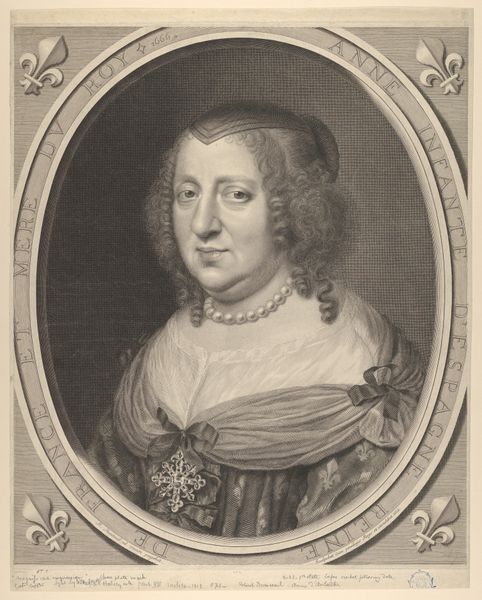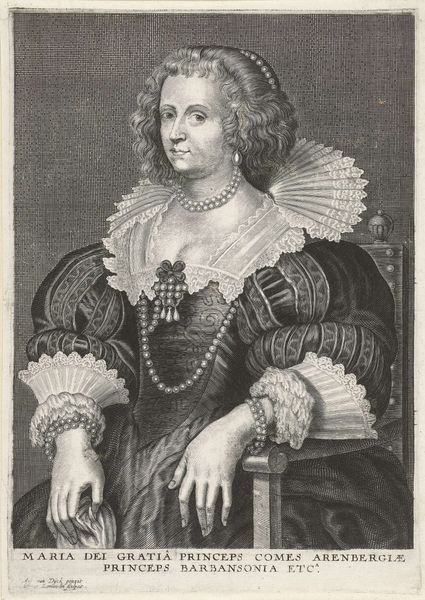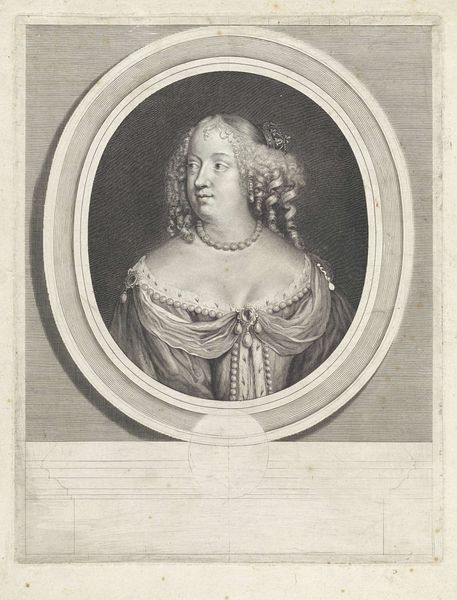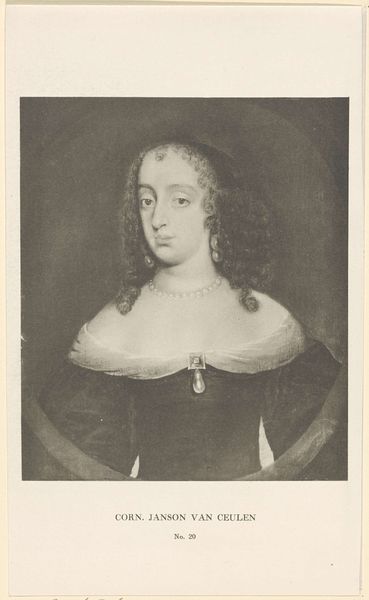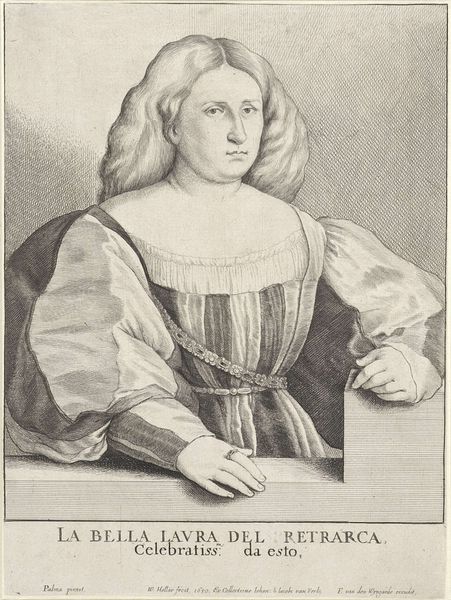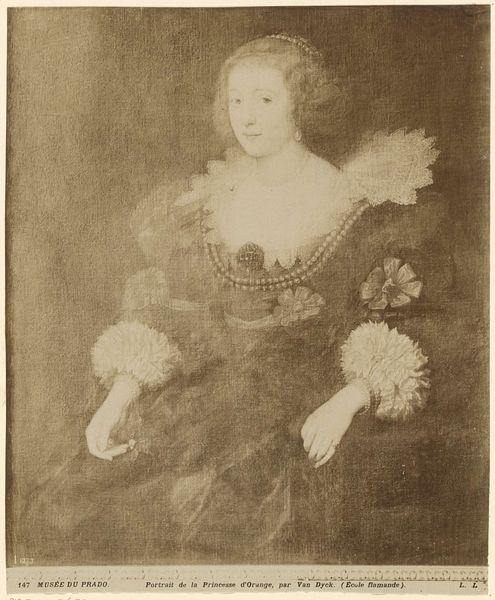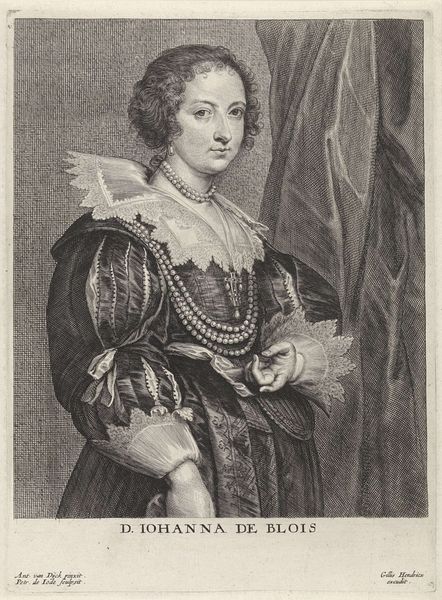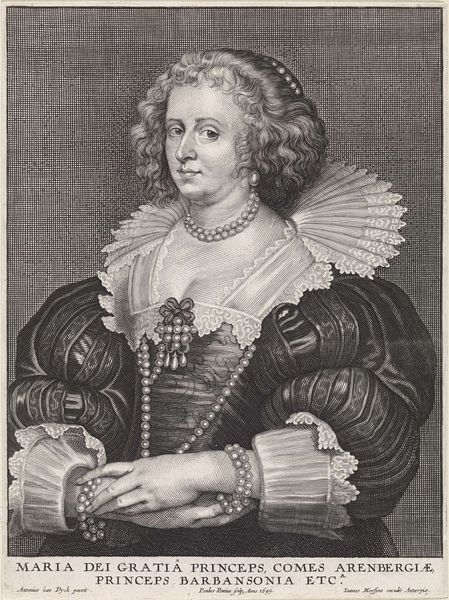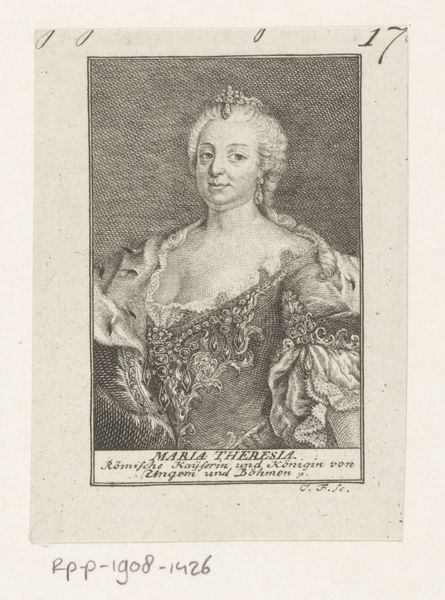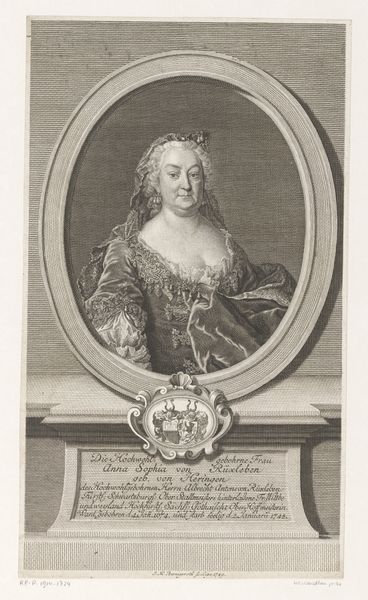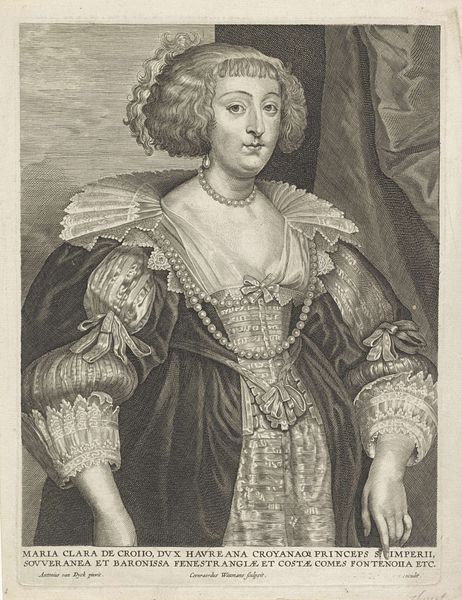
Dimensions: height 272 mm, width 212 mm
Copyright: Rijks Museum: Open Domain
Curator: Okay, let's discuss this print titled "Portret van Amalia van Solms" created in 1905 by Verlagsanstalt Fr. Bruckmann A.-G.. It looks like the work emulates Dutch Golden Age portraiture. I’m struck by its almost photographic quality, particularly given that it’s labelled as a print. The attention to detail in the ruff and the sitter's gown is quite impressive. What are your initial thoughts? Editor: Well, I’m immediately drawn to the historical context this piece evokes. It feels like it's trying to recapture a specific moment in Dutch history. What strikes me is, how does this image function within the cultural landscape of the early 20th century, when it was made? What was its purpose? Curator: Excellent question! It's vital to consider the 'why' of this image. While the artwork emulates baroque portraiture, created after the Dutch Golden Age era, the very act of creating this historical image tells us about the early 20th century’s relationship with the past. It appears to have been produced by a publishing company, suggesting its intention was for mass distribution, perhaps as a means of visually reinforcing national identity or even as a form of historical nostalgia. Do you think that museums displaying paintings affect society's view on art? Editor: Definitely. Museums are powerful institutions. The way they curate and present art shapes the public's perception and understanding of art history and influences its contemporary role. And placing her in the historical context as a leader makes me see this print as part of creating a sense of cultural legitimacy, something interesting to consider. Curator: Exactly! By re-imaging Amalia van Solms, Bruckmann is engaging in a form of cultural production that reflects and reinforces a certain reading of Dutch history. I find this reproduction fascinating from a socio-political view point. Editor: I learned a lot; I hadn't considered the printing and historical revival's impact. It is interesting to know what role mass produced historical art fulfills in national and cultural identity. Curator: And I hadn’t initially considered the extent to which its modern institutional context influences the work's interpretation. A thought-provoking discussion, indeed.
Comments
No comments
Be the first to comment and join the conversation on the ultimate creative platform.
